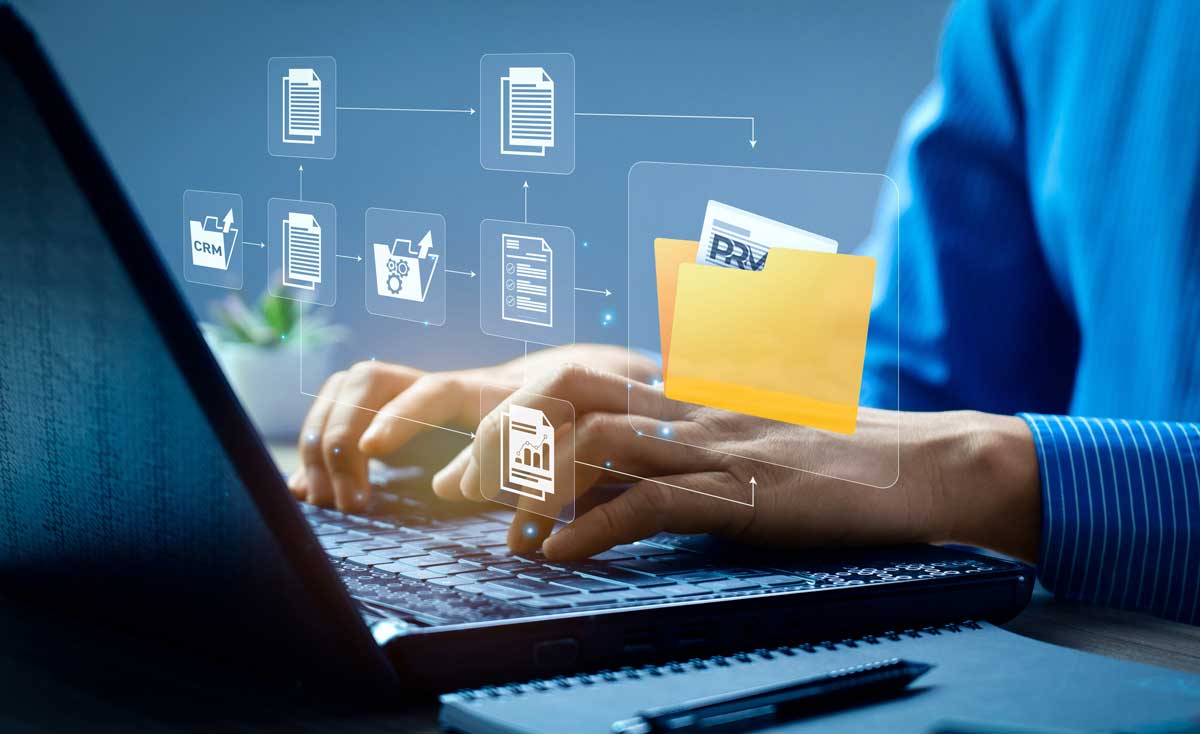Best Practices Articles

Recession is Coming. Is Your Channel Management Team Ready?
Over the last year or so, there has been much talk about another impending recession and how it could impact channel management. The recession theory is based upon historical trends, which suggest business cycles tend to last around five to seven years each. That means every five to seven years we experience some sort of a recession. Eventually the economy recovers, and then something else happens to triggers another recession. Current discussions are predicting another slowdown soon. This article explores how you can get your organization—and your channel management team —ready for the moment when another recession arrives.
Channel management is complex (see our article Challenges of Channel Management for more on this), but with proper preparation you can address many of the problems and even succeed in the face of the next recession.
Is recession coming? The current state of affairs
Bear market rallies
Over the last few weeks, the global markets have seen a series of bear market rallies, and several analysts are suggesting that when the market rises again in the near term, holders of securities should sell because the market has not yet reached its bottom. In several countries, markets are already down quite substantially.
China: borrowing from the future to stimulate growth
China, for example, has lost more than 50% of its market value over the last year. The Chinese economy is currently the second largest in the world, valued at around $9 trillion per year. Over the past five years or so, the Chinese government has provided multiple stimulants to drive economic growth. The biggest challenge for China, however, is that it has borrowed from the future to build its economy out, yet consumption has not increased substantially. Because of that dynamic, as the worldwide economy slows down, China as “the factory of the world” can no longer sustain growth due to weakness in demand—not just domestically, but abroad. This has led to a substantial slowdown of the Chinese stock market.
Slowdown in many of the world’s largest economies
Most recently, Japan has entered a recession again, tied primarily to demographic forces, and most developed countries have a huge amount of national debt, which is preventing them from developing in the future. Outside of BRICS (Brazil, Russia, India, China and South Africa) and MINT (Mexico, Indonesia, Nigeria and Turkey), the rest of the world is not large enough to compensate for the slowdown in most of the world’s large economies, even though commodity prices, including oil prices, have dropped substantially.
Wage stagnation in the middle class weakens consumption…
Basic consumption patterns have changed dramatically over the last 30 years, because of the amassing of wealth within the top one or two percent of society. At the end of the day, a rich person consumes on a daily basis roughly the same amount of commodities, energy or materials—exclusive of the luxuries associated with conspicuous consumption—as a middle class person does. However, because of wage stagnation in the middle class, incomes have not increased substantially, and thus demand for goods has stagnated as well.
…while productivity gains are being diverted to corporate profits
While technology continues to drive productivity, that productivity contributes more to corporate profit margins than to wage growth, and this has slowed down consumption substantially across the world. While Japanese and Chinese consumers tend to save more than consumers in developed countries like the U.S. and the U.K., some developed countries like Germany also have high rates of savings. As a result, especially after World War II, the engine that drove prosperity and growth—middle-class consumption—dropped substantially.
What does this mean for channel management?
For businesses, channel management has in many ways become more challenging, even as companies have taken various measures to reduce their sales cost and increase their reach—both in the business-to-business domain via various resellers, partners, etc., and the business-to-consumer domain through franchises, outlets and so on. Overall, the complexity of channel management has increased substantially (as we’ve noted in previous articles) due to the rapid progression of technology, the hypercompetitive nature of the marketplace and the reduction in the length of the product lifecycle, with new products being introduced much faster and time to profitability decreasing dramatically. On top of this, in the past five to seven years B2B sales and marketing processes have changed dramatically. Outside sales is rapidly being replaced by marketing automation and inside sales infrastructure.
Companies that are not ready, that have not invested properly to reduce their cost structure and build a lean mean channel management machine remain significantly exposed to the next downturn. Based on a consensus among most economists, analysts are not predicting a meltdown on the scale of what happened in 2008. However, they are anticipating a scenario similar to what has happened in Japan over the past two decades, with persistently sluggish growth—basically, a U-shaped recovery curve in which the market comes back very slowly, as opposed to a V-shaped curve in which the recovery is more rapid.
So when you look at countries like Brazil, China, more developed parts of Africa, and certainly most of Europe, including southern European countries like Greece, Spain and Italy, the issues are real: growth is disappearing and corporate profitability is at risk. The question is, how do you get your organization ready for the next downturn, and what can you do from a channel management perspective to stay ahead of the curve and continue to win?
Solutions: What you can do to prepare
Here are some ideas:
- Instead of waiting for the recession to hit, cut costs now. Cutting costs doesn’t necessarily mean laying off people. It means driving growth at a lower cost. The primary way to accomplish this is through automation and a slowdown on hiring. As you become more productive through automation, you are able to do more and grow more at the same cost structure. Also consider outsourcing your non-core activities to companies that focus their entire business on those activities. If those vendors can reduce your operating costs in several functions by 5% to 10%, that can give you a huge competitive advantage.
- Prioritize spending. Channel management has always been challenging when it comes to prioritization, because most organizations don’t have the granular data to really understand which partners are performing really well and why. While most companies have sales velocity data that shows which partners sell the most, very few have an understanding of which partners are most capable, why they are selling the most and how they are able to accelerate growth. This is where partner profiling comes in. If you profile your channel and have an understanding of why some partners are able to sell better than others, now you have the means to focus your engagement. Instead of panicking when the recession hits, your organization is already aligned with the future.
- Focus on a few partners that can help you win during a recession. When times get tough, most channel management teams will hitch their wagon to the partners that are performing, and that will make competition even fiercer. You may have to drop your prices, you may have to reduce your margins, and your organization may suffer at that point in time. Instead of waiting for that moment to arrive, you can hand-select a few partners today based on partner profiling activities and analysis, and start building those relationships in a strategic way. When the recession hits, you will already have strong relationships with the partners who are going to be absolutely critical during the downturn. Most importantly, you may even be able to add a few more partners in multiple countries where there is potential to grow. Even if they can’t grow when the downturn hits, they may be able to do so now while the economy is more or less okay, and they may rebound more quickly.
- Increase your reach in stable economies and reduce your exposure in vulnerable ones. At the global level, you have to prioritize where you are going to invest. The U.S. is still demonstrating a strong economy. Over the last six or seven years, the U.S. economy has undergone a significant transition and transformation by deploying technology and reducing delivery costs in multiple market segments, and it is in a much better position to withstand shock than other economies where businesses are highly regulated, where the flow of money is slow and where transparency is lacking. Prioritizing spending in companies where economies are more resilient and reducing your exposure to companies and economies where growth has been happening over the last few years may be a good strategy for preparing for the next downturn.
- Build a better forecasting engine by leveraging people, processes and automation. Forecasting matters less when all boats are rising; at that point you are just fulfilling demand. But forecasting is especially critical at times when the economy is struggling and demand is down, because when the supply-based cost structure is higher than what you can generate on the demand side, you remain exposed. When it comes to channel programs, rewards, rebates and other channel incentives, you need to think through about where you will focus a year from now if sales are off by 10%. Going through that forecasting process now will prepare you for that future when it arrives.
As we’ve said many times before, channel management is complex. However, proper planning, automation, and programs and processes aligned to focus on a few strategic partners ahead of time can get you ready for the next downturn. While nothing can guarantee complete success, taking control over the channel management process can increase the probability of success substantially compared to your competition. As the wise man said to the other when both were running to get away from the lion: “I don’t have to outrun the lion; I just have to outrun you.”
Best Practices Guidebook
 Winning with Partner Advisory Councils: Best Practices for Partner Engagement & Growth
Winning with Partner Advisory Councils: Best Practices for Partner Engagement & GrowthDownload Guide
 The Future of Partner Ecosystems Best Practices
The Future of Partner Ecosystems Best PracticesDownload Guide
 The AI Revolution: How Technology and Talent are Shaping the Future
The AI Revolution: How Technology and Talent are Shaping the FutureDownload Guide
 Top 105 Partner Management Metrics that Matter Best Practices
Top 105 Partner Management Metrics that Matter Best PracticesDownload Guide
 Mastering PRM Integration Best Practices
Mastering PRM Integration Best PracticesDownload Guide
 Building a Sales Partner Portal with Salesforce Best Practices
Building a Sales Partner Portal with Salesforce Best PracticesDownload Guide
 Building and Managing Partner Ecosystems Best Practices
Building and Managing Partner Ecosystems Best PracticesDownload Guide
 Mastering Co-Marketing and Co-Selling Best Practices
Mastering Co-Marketing and Co-Selling Best PracticesDownload Guide
 Transforming Partner Ecosystems Best Practices
Transforming Partner Ecosystems Best PracticesDownload Guide
 Mastering Partner Ecosystems Best Practices
Mastering Partner Ecosystems Best PracticesDownload Guide
 Mastering Partner Onboarding Best Practices
Mastering Partner Onboarding Best PracticesDownload Guide
 Partner Ecosystem Management Best Practices
Partner Ecosystem Management Best PracticesDownload Guide
 B2B Marketing in the Age of Intelligence Best Practices
B2B Marketing in the Age of Intelligence Best PracticesDownload Guide
 Multi-Partner Co-Selling Best Practices
Multi-Partner Co-Selling Best PracticesDownload Guide
 A Guide to Enhance Channel Sales Efficiency
A Guide to Enhance Channel Sales EfficiencyDownload Guide
 Mastering Affiliate Marketing Best Practices
Mastering Affiliate Marketing Best PracticesDownload Guide
 The Ultimate Guide to Channel Partner Management
The Ultimate Guide to Channel Partner ManagementDownload Guide
 Top 10 Trends in 2024 Partner Relationship Management
Top 10 Trends in 2024 Partner Relationship ManagementDownload Guide







